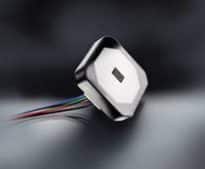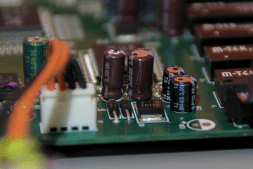Santa Rosa, California, August 10th, 2023 – SCHURTER introduces the innovative THS switch series with optical sensor technology that can be concealed behind any surface without the need for mounting holes. A small opening in the user interface is all that is needed to allow the ToF sensor to actuate. Equipment and appliances used in public areas has created demand for … [Read more...]
New FXP Fuseholder with Increased Power Ratings Already Fulfills Upcoming IEC Standard
Santa Rosa, California, June 8th, 2023 – SCHURTER, a leading provider of electronic components, is proud to announce its new FXP fuseholder with increased power ratings. The closed fuseholder provides a solution to a longstanding industry challenge that involves power dissipation limitations for fuseholders used at higher operating currents and temperatures. SCHURTER’s new FXP … [Read more...]
Summary of Military and Aerospace EMC Tests
INTRODUCTION Military and aerospace EMC tests cover a wide range of products. While the standards, including limits and test methods may differ, all EMC test standards have a few things in common. The most basic are the limits for emissions and the types and levels of susceptibility testing. Emissions tests (and their associated limits) are put in place for military and … [Read more...]
Summary of Commercial EMC Tests
Introduction Commercial EMC tests cover a wide range of products. These include the obvious ones like computers and their peripherals but also cover household appliances, electric tools, and a wide variety of other products. While the standards, including limits and test methods, may differ, all EMC test standards have a few things in common. The most basic are the limits for … [Read more...]
Protecting RF, Receiver, Analog and Control Line Input Circuits Against The RTCA DO-160 Pin Injection Lightning Test
ABSTRACT Circuits are described that effectively protect RF, receiver, analog, and control line input circuits from three types of transient injection, described in DO-160, directly into the input pin of the connector. The goal was to achieve a circuit which would not adversely affect the performance of the RF circuit over an input frequency range of 20MHz to above 1GHz … [Read more...]
The Vital Role Of Simulation For Virtual EMI And EMC Test Environments
Before deploying microwave and millimeter-wave devices and systems within 5G, the Internet of Things (IoT), and high-speed wireless communication, it is essential to predict their performance. This need has increased the demand for virtual test platforms through simulation software. High carrier and system bus frequencies are necessary for high-data-rate communication … [Read more...]
Knee Frequency is A Misleading Bandwidth Metric
INTRODUCTION There is a transmission line critical length rule that is often used in high-speed PCB design by novice engineers. This rule should not be used and is not appropriate for high-speed PCBs. The bandwidth limit of a digital signal or a high-speed digital channel is often used in certain calculations to get estimates of channel behavior. For example, the knee … [Read more...]
Stop Using the Critical Length Rule in High Speed PCB Design
The PCB world is in flux and an inrush of new designers is appearing on the horizon. Unfortunately, marketing material from manufacturers and CAD companies continues to spread outdated design guidelines that are easily misapplied, or they are simply wrong. One of these design rules that appears to be endemic is the critical length rule for transmission lines. This rule is used … [Read more...]
Placing a Metal Plate in Front of a EUT May Not Be Enough to Solve Radiated Emissions Exceedances or Radiated Susceptibility Failures
EXAMPLE OF AN EUT WHICH HAS FAILED RADIATED SUSCEPTIBILITY As described in reference 1, the EUT was exposed to a radiated immunity test at a level of 20V/m. The side which contained a vertical metal plate, with an approximately 0.3m x 0.3m dimension and which was electrically isolated from a metal baseplate failed at 12V/m and 300MHz. On the other sides of the EUT, … [Read more...]
A Short History Of A Few ITEM Issues
1977 My first issue of ITEM (Interference Technology Engineers Master) is from 1977. Was this the first issue of ITEM? No, it was not. However, it was my first issue. Why? I got my start in EMC in 1976 while working for the US Navy and was too late to get the 1976 issue. I graduated from college in 1975 and moved from Code 2330 (Nuclear Controls Engineering Division) at Mare … [Read more...]
- « Previous Page
- 1
- …
- 5
- 6
- 7
- 8
- 9
- …
- 364
- Next Page »















